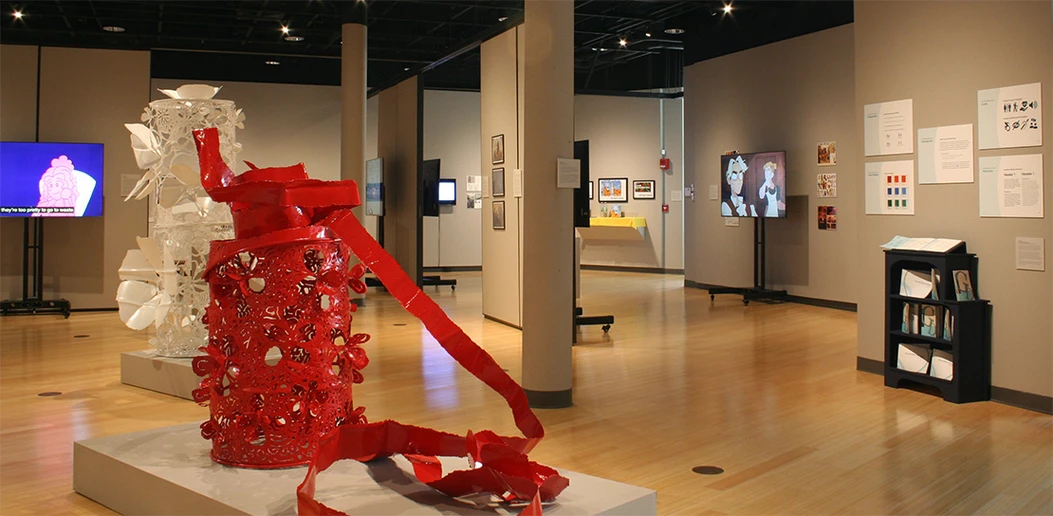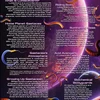Lillian Baer’s sculpture, “Treasured Trash” (left), which was part of the “(Un)Limited Space” exhibition was selected for the President’s Award. Lilian Holman’s “Accessible Design Style Guide,” (far right) earned the Cathy and Jesse Marion Art Gallery Award.
Two SUNY Fredonia students received awards for their artwork in the spring senior show at the Cathy and Jesse Marion Art Gallery.
Lillian Baer, a Sculpture major from Jamestown, NY, received the President’s Award and Lilian Holman, a Graphic Design major from Rendon, Texas, was selected for the Marion Art Gallery Award.
Baer and Holman were among the 27 artists who participated in “(Un)Limited Space,” an exhibition that featured digital illustrations, animated short films, photographs, sculpture, and graphic design by graduating seniors from the Department of Visual Arts and New Media. The exhibition ran from May 2 to 11.
In selecting Baer’s painted steel sculptures titled “Treasured Trash” for the President’s Award, Andy Karafa, dean of the College of Liberal Arts and Sciences, noted the work was striking in multiple ways.
“First, each was remarkably elaborate, given their humble origins,” Karafa said. “Second, and related to the first point, the idea that objects commonly associated with trash and waste could be repurposed into such beautiful works was remarkably insightful.”
For the senior show, Baer transformed steel barrels into intricately designed sculptures using an oxygen acetylene torch. It was noted that the movement and delicacy of the flowers and meandering ribbons belied the rigid steel from which they are made from. It was also stated that Baer “gives meaning and beauty to an industrial product that has very negative connotations as permanent waste and containers of harmful chemicals.”
Gallery Director Barbara Räcker selected Holman’s “Accessible Design Style Guide” for the Marion Art Gallery Award saying it is “impressive, from the 11 handbound copies of two style guide designs to the handmade shelving unit holding them.”
“The project is well researched and meticulously crafted,” Räcker added. “The larger booklet is especially inviting with its clean design, soothing color scheme, and use of white space. Lili practices what she preaches about accessible design, using fonts, hierarchy, layout, line spacing, contrast, and color to maximize readability and engagement.”
“Accessible Design Style Guide” is a practical design resource that challenges the graphic design industry to prioritize inclusivity. It addresses major barriers to accessibility, especially the limitations of outdated ADA standards, which have not been officially revised since 2010. With the internet and visual communication playing increasingly essential roles in everyday life, accessibility in design is no longer optional; it is necessary.
Holman was also commended by Räcker for coordinating, designing, and printing an exhibition catalog for each of her colleagues in “(Un)Limited Space,” which she cleverly titled “A Space for Art.” Each of the 27 artists is featured on their own page with multiple images.
“(Un)Limited Space” was supported by the Fredonia College Foundation’s Cathy and Jesse Marion Endowment Fund and the Friends of Rockefeller Arts Center.





